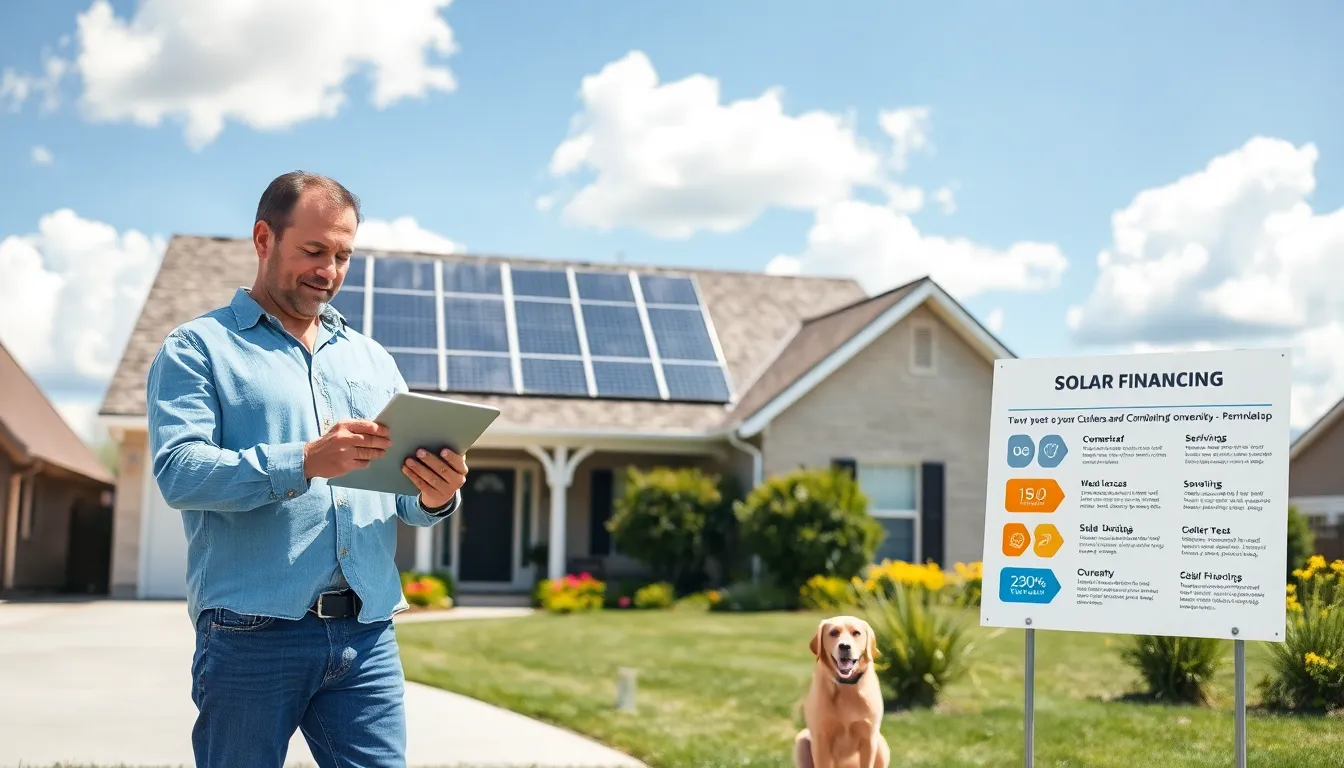Table of Contents
ToggleAs the world moves increasingly towards sustainable energy solutions, homeowners are often left wondering how they can make the leap to solar power. One major consideration is understanding the variety of financing options available. In this text, “Lots Of Power Files Finance Solar Home Ebook” will investigate into the different methods of financing a solar home installation, the key factors to consider when making a decision, and help you navigate your path to a greener future.
Understanding Solar Home Financing Options

Understanding how to finance a solar power system is crucial for homeowners considering this energy transition.
Types Of Solar Financing
Solar financing options generally fall into three main categories: cash purchase, loans, and leases.
- Cash Purchase: This is the most straightforward option where homeowners pay the full amount upfront, allowing them to own the system outright from the get-go.
- Solar Loans: These loans enable homeowners to borrow money to purchase the system while paying it off over time, usually at a lower interest rate compared to other types of loans.
- Leasing: In a solar lease agreement, homeowners pay a monthly fee to use the solar system, typically without the obligation of ownership. This is particularly appealing for those who prefer not to make a large upfront investment.
Benefits Of Solar Financing
Investing in solar energy through financing brings numerous advantages. Not only does it allow homeowners to reduce their energy bills, but it also increases the value of their home. Also, with local and federal incentives, such as tax credits, the long-term savings can significantly offset the initial costs. Besides, financing options can be tailored to suit different budgets and energy needs, making solar more accessible than ever.
Key Considerations When Financing Solar
Before plunging into a solar installation, it’s essential to assess your individual circumstances and the various financial implications.
Evaluating Your Solar Needs
Homeowners should first analyze their energy consumption and determine how much power they need from a solar system. This involves reviewing past utility bills and considering the energy efficiency of appliances in the home. Getting a professional assessment can also help tailor a system to meet specific energy needs.
Understanding Local Incentives And Rebates
It’s essential to stay informed about local incentives, such as tax rebates and credits, which can significantly reduce the overall cost of a solar system. Many states and municipalities offer financial incentives for going solar, and these can vary widely. Researching local offerings will ensure homeowners take full advantage of available financial support.
Choosing The Right Financing Option For Your Home
With various financing options available, the choice eventually comes down to personal preference and financial situation.
Lease Vs. Purchase: Which Is Better?
Leasing versus purchasing a solar system often comes down to personal financial goals. Purchasing a system means ownership, which usually leads to greater savings in the long run. But, leasing allows for easier installation and maintenance without the substantial upfront cost. Homeowners should evaluate their long-term energy goals, including how long they plan to live in their current houses, before deciding on either option.
The Role Of Solar Loans
Solar loans fill the gap between leasing and purchasing. They allow for ownership while spreading payments over time, letting homeowners enjoy the benefits of homeownership without the upfront burden. These loans often come with favorable terms, including fixed interest rates and flexible repayment plans, making them a popular choice for many.
Exploring Power Purchase Agreements (PPAs)
Power Purchase Agreements (PPAs) present another compelling financing option for solar energy. This model allows homeowners to pay for the power generated rather than for the solar equipment itself.
How PPAs Work
In a PPA arrangement, a third-party company installs the solar panels on the homeowner’s property, and the homeowner agrees to buy the produced electricity at a fixed rate. This can provide immediate savings compared to traditional utility rates without any upfront capital outlay.
Pros And Cons Of Power Purchase Agreements
While PPAs make solar energy instantly accessible, they do have drawbacks. Pros include lower monthly costs and no maintenance responsibilities, as the third-party company handles that. But, since homeowners do not own the system, they typically do not qualify for federal tax credits or local incentives. Homeowners need to weigh these factors carefully before choosing a PPA.
Conclusion
Financing a solar home installation presents various options, each with unique advantages and considerations. Homeowners must evaluate their energy needs, understand local incentives, and select a financing method that aligns with their financial goals. Whether through leasing, solar loans, or PPAs, engaging with the right finance strategy can open doors to sustainable living. With the right resources and information, anyone can navigate the solar financing landscape, ensuring a bright and renewable future.







